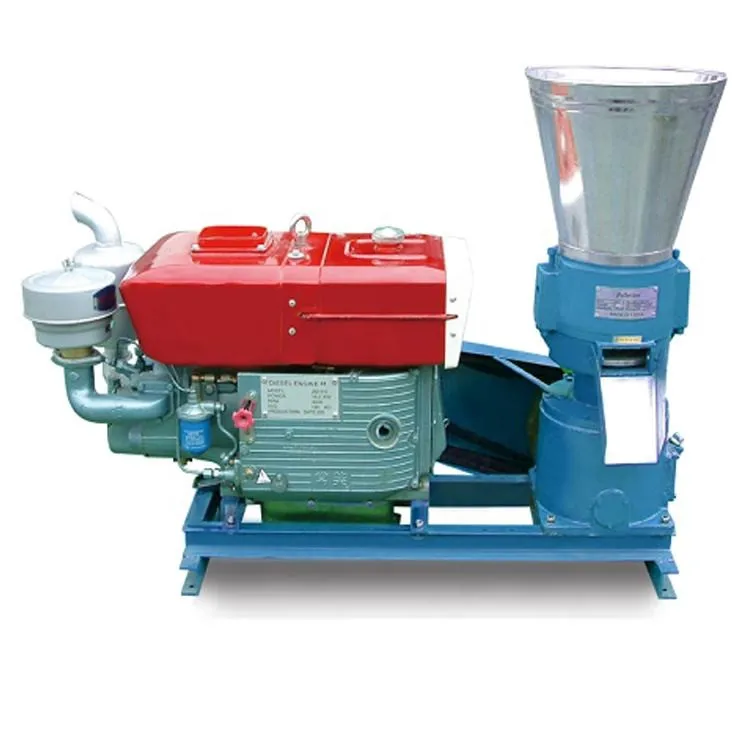fish feed pelleting machine
Dec . 12, 2024 04:03 Back to list
fish feed pelleting machine
The Importance of Fish Feed Pelleting Machines in Aquaculture
Aquaculture, one of the fastest-growing sectors of the global food industry, relies heavily on efficient feeding practices to ensure healthy fish growth and optimum production. Central to this process is the fish feed pelleting machine, an essential tool that transforms raw materials into high-quality feed pellets. This innovation not only contributes to the overall efficiency of fish farms but also plays a critical role in sustainable aquaculture practices.
What is a Fish Feed Pelleting Machine?
A fish feed pelleting machine is a specialized piece of equipment designed to process various raw ingredients such as grains, fishmeal, and other nutrients into pellets suitable for fish consumption
. The primary goal of this machine is to provide a nutritious, digestible, and palatable feed that meets specific dietary requirements for different species of fish. By ensuring that fish receive a balanced diet, farmers can promote better growth rates, enhance feed utilization, and improve overall stock health.How Pelleting Works
The process of pelleting involves several steps mixing, conditioning, pelleting, and cooling. First, raw ingredients are carefully measured and mixed to achieve a uniform blend that meets the nutritional specifications needed for the target fish species. Next, the mixture is heated and conditioned using steam, which activates the binding properties of the ingredients and prepares them for the pelleting phase.
In the pelleting stage, the conditioned feed is forced through a die under high pressure, forming pellets of various sizes and shapes. This process not only densifies the feed but also improves its stability in water, reducing waste and pollution in aquatic systems. Finally, the pellets are cooled and dried to ensure their longevity and prevent mold growth, making them suitable for storage and transport.
Advantages of Using Pelleted Feed
fish feed pelleting machine

Pelleted fish feed offers several advantages over traditional meal feeds. Firstly, pellets tend to have a more uniform size and shape, which facilitates easier feeding and reduces competition among fish. This uniformity helps ensure that all fish receive the appropriate amount of nutrients, promoting healthy growth across the entire stock.
Secondly, pelleted feed has improved water stability, meaning it resists disintegration in water for longer periods. This property not only minimizes waste but also reduces the risk of water pollution, making aquaculture practices more environmentally friendly. Furthermore, the pelleting process helps to incorporate various vitamins, minerals, and other additives that are crucial for fish health and productivity.
Sustainability and Efficiency
As the demand for fish continues to rise globally, so does the need for sustainable aquaculture practices. The use of fish feed pelleting machines aligns with these objectives by optimizing feed conversion rates and minimizing waste. By producing high-quality, balanced feed, fish farmers can achieve more efficient growth and improved yields without depleting marine resources.
Moreover, advancements in pelleting technology, such as the incorporation of alternative protein sources and additives, contribute to reducing the environmental impact of fish farming. Aquaculture can thus become a more sustainable food production system that meets the needs of a growing population while preserving aquatic ecosystems.
Conclusion
In conclusion, fish feed pelleting machines are indispensable tools in the aquaculture industry, offering numerous benefits that enhance fish farming practices. From improving feed efficiency to promoting sustainable practices, these machines play a vital role in the future of food production. As the industry continues to evolve, investing in advanced pelleting technology will be crucial in meeting the global demand for fish while safeguarding the environment for future generations.
-
Automatic Feeding Line System-Pan Feeder Nipple Drinker|Anping County Yize Metal Products Co., Ltd.
NewsJul.29,2025
-
Hot Sale 24 & 18 Door Rabbit Cages - Premium Breeding Solutions
NewsJul.25,2025
-
Automatic Feeding Line System Pan Feeder Nipple Drinker - Anping County Yize Metal Products Co., Ltd.
NewsJul.21,2025
-
Automatic Feeding Line System Pan Feeder Nipple Drinker - Anping County Yize Metal Products Co., Ltd.
NewsJul.21,2025
-
Automatic Feeding Line System - Anping Yize | Precision & Nipple
NewsJul.21,2025
-
Automatic Feeding Line System - Anping Yize | Precision & Nipple
NewsJul.21,2025






